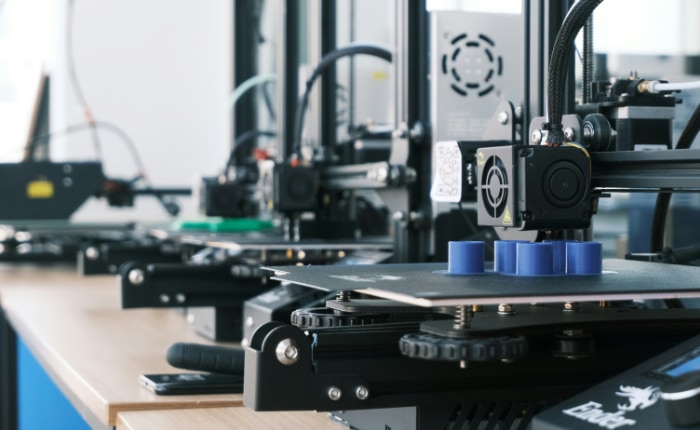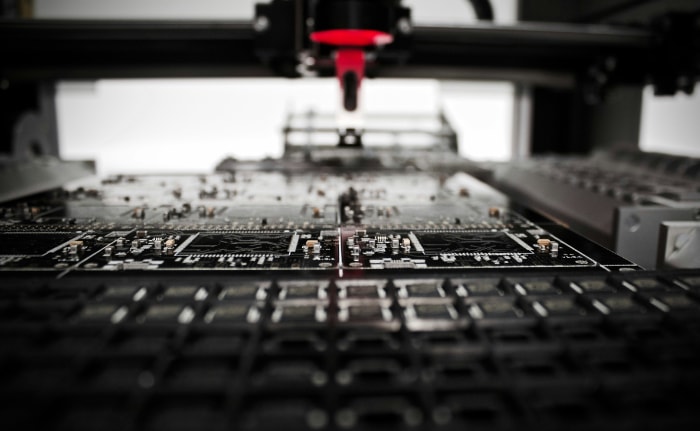OEM vs. ODM: From Concept to Consumer

Exploring the world of manufacturing and product development involves making critical decisions that can significantly impact the success of your business. Among these decisions is choosing between two distinct but often confused models: Original Equipment Manufacturer (OEM) and Original Design Manufacturer (ODM).
This choice is not merely about outsourcing production; it’s about defining the role your business will play in the creation and distribution of your products. Both models offer unique benefits and come with their own set of challenges, making it imperative for businesses to fully grasp what each entails.
What is OEM?
Original Equipment Manufacturer (OEM) refers to companies that produce parts or equipment that are then used in another company’s end product. This business model is central to industries ranging from automotive to electronics, where brands rely on specialized manufacturers to produce components that meet precise specifications.
OEMs provide a crucial service by allowing companies to focus on design and innovation while outsourcing the manufacturing of certain parts or the entire product.
OEM Business Model
The OEM business model is characterized by a partnership between a manufacturer and a brand that needs specific components or products. The brand typically provides detailed specifications and designs to the OEM, which then manufactures the product according to these requirements.
This model is beneficial for companies that want to leverage specialized manufacturing capabilities without maintaining their own factories, allowing them to scale production up or down based on demand.
Process of OEM Manufacturing
The process begins with the buying company providing detailed specifications and designs to the OEM. These specifications outline everything from material requirements to production standards, ensuring the final product meets the buyer’s needs.
The OEM then uses its expertise and resources to manufacture the product, often involving complex production lines and quality control processes. Throughout this process, the buying company may provide oversight and feedback to ensure the product aligns with its expectations.
Benefits and Challenges of Partnering with OEMs
Partnering with OEMs offers numerous benefits, including access to specialized manufacturing capabilities and the ability to focus on core competencies such as design and marketing. This collaboration can lead to cost savings, as companies don’t have to invest in their own manufacturing facilities.
Additionally, OEM partnerships can enhance product quality and innovation by leveraging the manufacturer’s expertise.
However, challenges exist, including dependency on the OEM for product quality and timely delivery. Communication barriers and cultural differences can also complicate the relationship, especially in international partnerships.
Moreover, companies must protect their intellectual property when sharing designs and specifications with OEMs, requiring clear contracts and trust.
What is ODM?
Original Design Manufacturer (ODM) stands as a significant model in the realm of manufacturing, offering a contrasting approach to that of the Original Equipment Manufacturer (OEM). ODMs provide comprehensive services from the design phase to the manufacturing of products.
This model allows companies to leverage the expertise and capabilities of manufacturers that specialize in designing and producing products that can then be branded by the purchasing company.
Difference Between ODM and OEM in Product Development and Ownership
The primary distinction between ODM and OEM lies in the ownership and initiation of product designs. Unlike OEM, where the buying company provides the product’s specifications and designs, in the ODM model, the manufacturer creates the product’s design and specifications.
This means that ODMs offer ready-made or off-the-shelf products that can be branded and sold by the buyer under their own name. This model significantly reduces the time and cost associated with product development, as the ODM takes on the responsibility of designing and manufacturing the product.
Process of Working with an ODM
Collaborating with an ODM involves selecting from the manufacturer’s existing product designs, possibly with some customization to align with the buyer’s requirements. The ODM’s role encompasses both the design and production stages, offering a turnkey solution that can expedite market entry.
This partnership allows businesses to focus on their core competencies, such as brand development and market expansion, while relying on the ODM’s expertise in product creation.
Advantages of Choosing ODM for Product Creation
Partnering with an ODM can offer several benefits, including reduced research and development time, lower cost, and the ability to quickly launch new products. This model is particularly appealing for companies looking to expand their product lines without investing heavily in new product development.
It also allows companies to benefit from the ODM’s specialized expertise in certain product categories.
Potential Downsides of ODM Partnership
While there are notable advantages, working with an ODM can also present challenges. The most significant is the reduced control over the product’s design and uniqueness, as ODM products may be less customizable and potentially sold to other companies.
This can lead to higher competition in the market with similar products. Additionally, relying on an ODM for product design and manufacturing might limit a company’s ability to build and retain in-house expertise in these areas.
Key Differences Between OEM and ODM

Choosing between Original Equipment Manufacturer (OEM) and Original Design Manufacturer (ODM) models is more than a mere decision; it’s a strategic move that can influence a business’s trajectory in product development, market competition, and brand perception.
Design Control
OEM allows businesses to retain significant control over the design of their products. Companies provide the specifications, ensuring the final product aligns closely with their vision and brand identity.
In contrast, ODM offers less flexibility in design modification as products are pre-designed by the manufacturer. This model suits businesses looking for efficiency and speed in product development without the necessity of in-depth design involvement.
Intellectual Property
In the OEM model, the hiring company owns the intellectual property (IP) of the product design, which can offer a competitive edge and uniqueness in the market. However, with ODM, the intellectual property usually remains with the manufacturer since they create the product designs.
This arrangement might limit the company’s control over the product exclusivity and potential for customization.
Production Costs
OEM can be more cost-intensive due to the custom development processes and the need to create specific molds or tools for production. Conversely, ODM can significantly reduce production costs as the products are based on existing designs, and the economies of scale are in favor of pre-developed products.
This cost efficiency makes ODM appealing for companies looking to launch products with minimized financial input.
Time to Market
ODM typically offers a faster time to market since the products are already designed and only need to be adapted or branded for the company purchasing them. This speed can be a decisive advantage in industries where trends and consumer preferences change rapidly.
On the other hand, OEM requires more time for product development, from design conception to final production, making it a slower process to market.
Real-world Examples
A company looking to launch a unique line of smartwatches with specific functionalities and brand-aligned aesthetics might choose an OEM approach to maintain design control and product uniqueness.
In contrast, a retail business eager to quickly capitalize on the growing demand for wireless headphones might opt for an ODM model, selecting a pre-designed product that can be branded and launched swiftly, reducing time to market and upfront investment.
How to Choose Between OEM and ODM
Deciding whether to partner with an Original Equipment Manufacturer (OEM) or an Original Design Manufacturer (ODM) is a strategic decision that can significantly influence a company’s product development path, market position, and financial health.
Business Goals
Your decision should be closely aligned with your long-term business goals. If brand differentiation and control over product design are paramount to your brand’s identity and value proposition, an OEM approach may be more suitable.
However, if speed to market and cost efficiency are your primary objectives, with less emphasis on product uniqueness, ODM could be the preferable option. Assessing your business goals will help determine which manufacturing model best supports your vision for growth and market presence.
Product Complexity
Consider the complexity of the product you intend to develop. OEM is typically favored for products requiring highly specialized design, engineering, or materials, as it allows for greater control over the manufacturing process and outcomes.
If your product involves cutting-edge technology or proprietary features, OEM provides the customization necessary to bring your innovative ideas to life. On the other hand, for more standardized products where differentiation is not heavily reliant on unique features or specifications, ODM can offer a more straightforward and cost-effective path to market.
Market Competition
Evaluate the level of competition in your target market. In highly competitive markets where differentiation is key to gaining a competitive edge, opting for an OEM can provide the exclusivity needed to stand out.
Conversely, in markets where speed and price are critical factors in capturing market share, the ODM model’s efficiency and cost savings can be a significant advantage, allowing for rapid deployment of products.
Budget Constraints
Budget considerations are crucial in choosing between OEM and ODM. OEM often requires a larger upfront investment in design, development, and tooling, which might not be feasible for all businesses.
ODM, with its lower upfront costs and shared development expenses, can be a more budget-friendly option, especially for startups or companies looking to test a new market without committing substantial resources.
Assessing Internal Capabilities and Market Needs
Analyze your company’s internal capabilities, including design, development, and marketing skills, as well as your ability to manage the manufacturing process. If your internal resources are limited, an ODM partnership can leverage external expertise to fill these gaps.
Additionally, consider market needs and consumer expectations. Conduct market research to understand your customers’ preferences and how quickly they expect new products to be available, guiding your decision towards either OEM or ODM based on these insights.
Strategic Considerations for Businesses

Selecting between Original Equipment Manufacturer (OEM) and Original Design Manufacturer (ODM) models is more than a tactical choice—it’s a strategic decision that affects a company’s brand identity, market positioning, and potential for growth.
Impact on Brand Identity and Market Positioning
The choice between OEM and ODM can substantially affect a company’s brand identity and positioning within its target market. An OEM partnership, with its emphasis on custom product development, allows for a high degree of product differentiation.
This can strengthen a brand’s identity and enable it to occupy a unique position in the market. Conversely, using an ODM can accelerate the product development process and facilitate entry into competitive markets, although it might limit the degree of product uniqueness.
Businesses must weigh how each model aligns with their branding strategy and market positioning goals.
Scalability Considerations
Scalability is a critical factor in choosing between OEM and ODM. For companies aiming for rapid growth, ODMs can offer a quick route to market for new products, supporting scalability without the need for extensive investment in product development and manufacturing infrastructure.
In contrast, OEM partnerships can be more resource-intensive upfront but provide more control over production capacity and quality, which is crucial for businesses planning to scale at a controlled pace while maintaining a strong brand image.
Due Diligence and Partner Selection
The importance of conducting thorough due diligence cannot be overstated when selecting an OEM or ODM partner. Businesses should rigorously evaluate potential partners’ capabilities, track record, quality control procedures, and alignment with their strategic objectives.
This evaluation helps mitigate risks associated with quality, supply chain disruptions, and compliance with regulatory standards. Choosing a partner that aligns with your company’s values and long-term goals is crucial for establishing a fruitful and enduring relationship.
The Role of Negotiation
Effective negotiation is vital in establishing successful OEM or ODM relationships. Clear communication regarding product specifications, quality expectations, timelines, and pricing is essential.
Companies should also negotiate terms that protect their intellectual property and ensure flexibility in response to changing market conditions or business needs. A well-negotiated agreement lays the foundation for a collaborative partnership that supports mutual growth and adaptation.
Conclusion
Grasping the distinctions between Original Equipment Manufacturer (OEM) and Original Design Manufacturer (ODM) models is crucial for businesses plotting their course in product development and market strategy. Each option offers unique advantages, from OEM’s bespoke product creation that aligns with precise brand visions to ODM’s speed and efficiency in bringing products to market.
The choice between these models impacts not just immediate production needs but also long-term strategic goals, brand identity, and scalability.
Businesses are encouraged to weigh these considerations thoroughly, aligning their choice with both their current capabilities and future aspirations.


